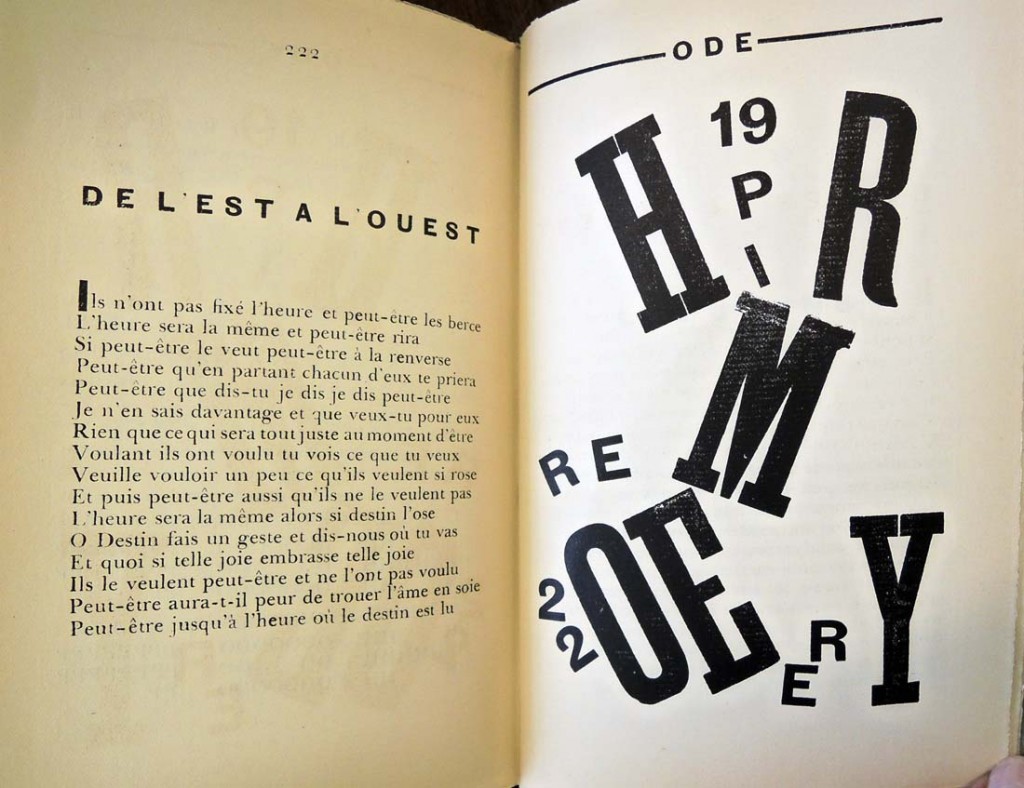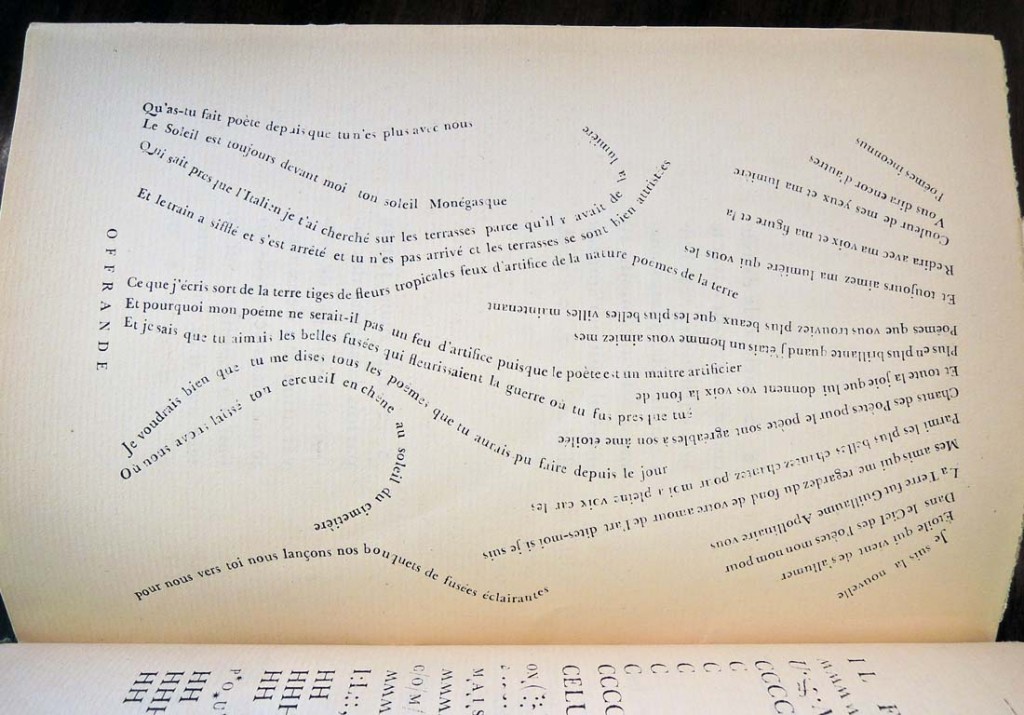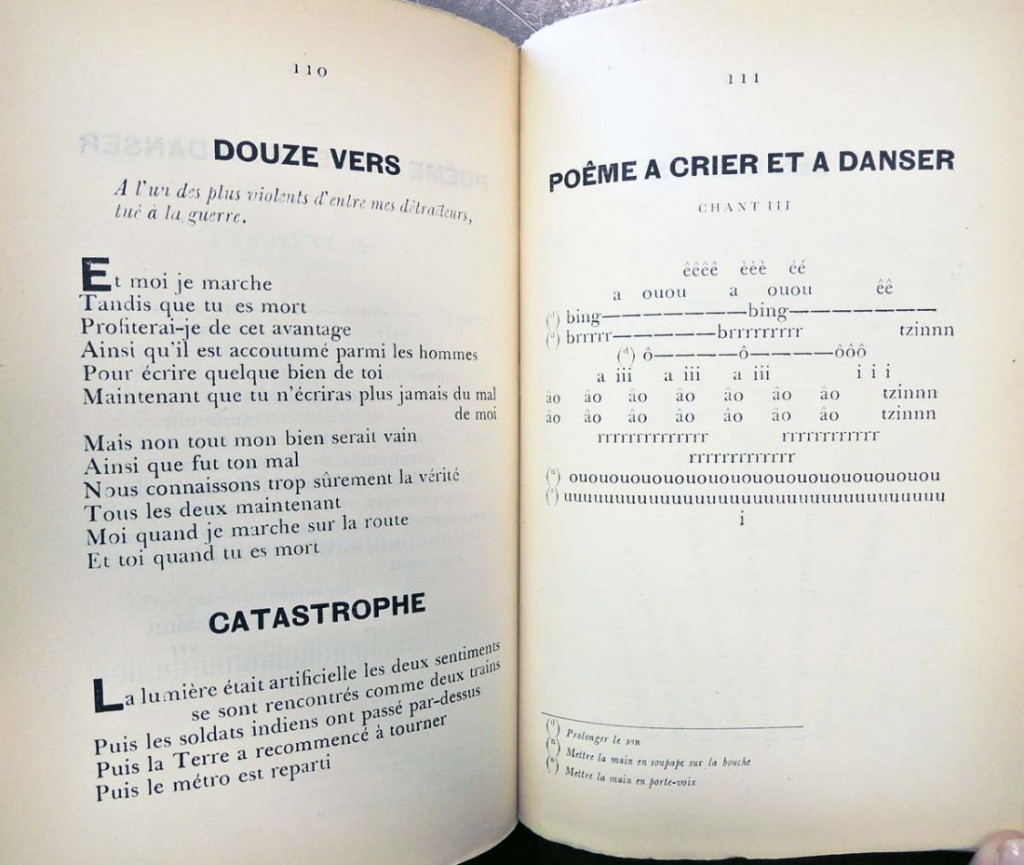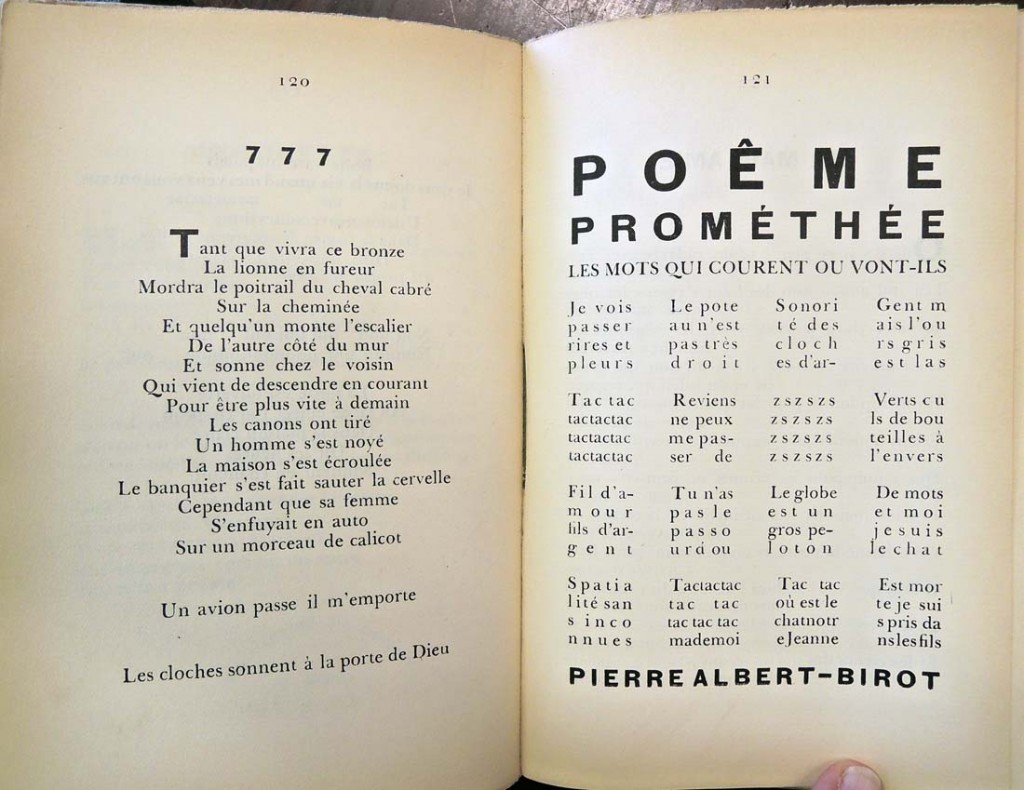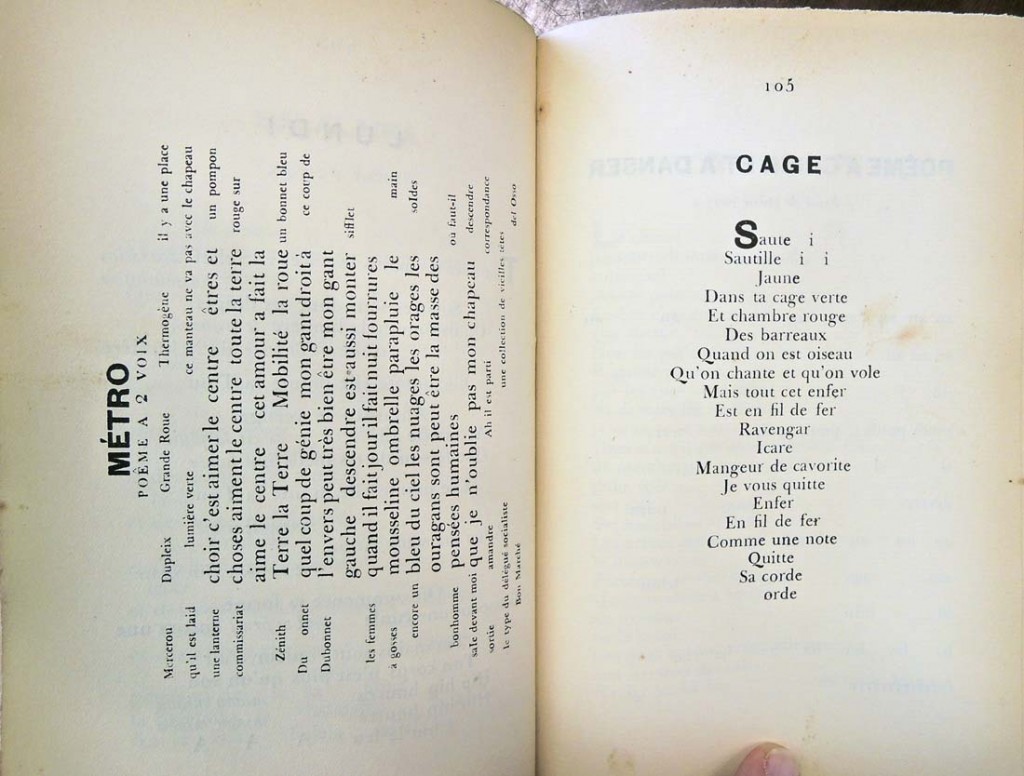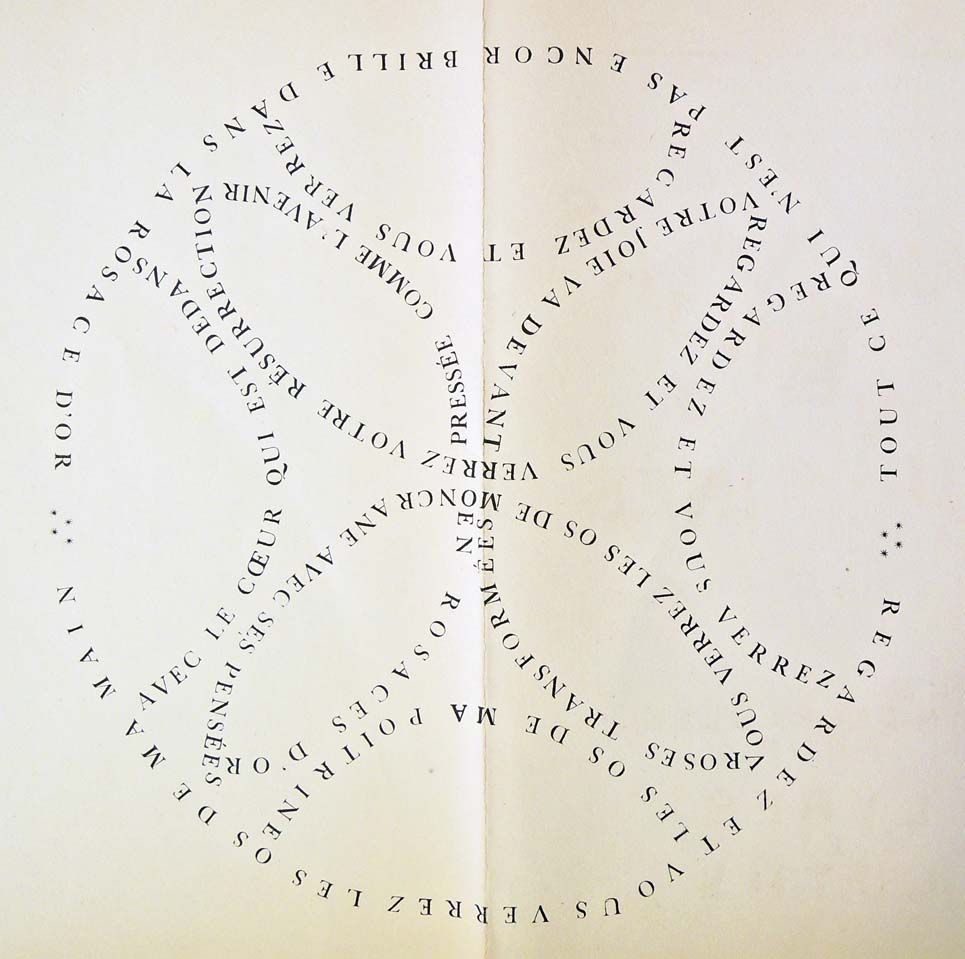
Pierre Albert-Birot, La lune, ou, Le livre des poèmes (Paris: Budry, 1924). “Cet ouvrage a été tiré à 326 exemplaires: 26 exemplaires sur Chine … dont un imprimé pour l’auteur, et 25 numérotés de 1 à 25 … [et] 300 ex. sur vergé pur fil Lafuma … numérotés de 26 à 326”–Page [2]. Graphic Arts Collection GAX 2015- in process
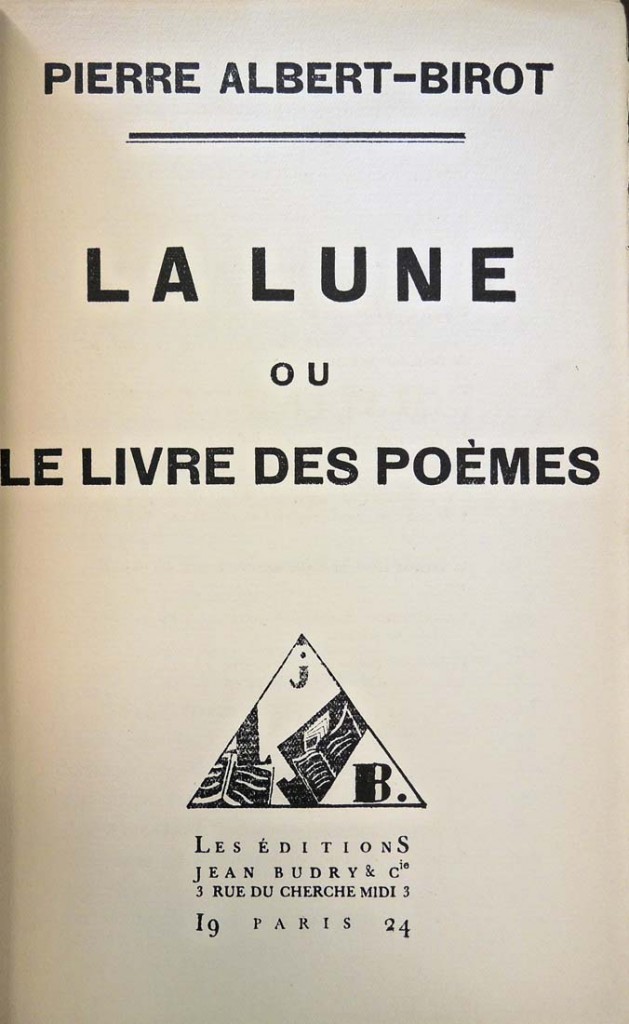
The artist who in his painting and drawing comes to an understanding of the creative act and produces a microcosm of creation through the form and space of the canvas applies himself as poet to the concrete dimensions of the poem to produce a construction which is at once visual and verbal. It is this which makes an understanding of Albert-Birot’s visual poetry essential for an appreciation of his work as a whole. The fact that he mastered the printing process cannot be reiterated often enough. Creation does not take place only in the mind of the poet, it is received not only in the mind of the reader: creation is concrete, the poem is an object.
The printed space is a practical, functional, mechanical one. The poet and the reader replace it with a “literary or aesthetic space”, an imaginary space, a space of the imagination. Here mechanics and aesthetics fuse to create space which is at once imaginary and material. The superficial visual delight belies deeper bodily sensation just as the sound poems of La Lune explore the archaic noises and rhythms of poetry. This is not experimental poetry for its own sake, nor merely playful audacity in breaking the rules, being willfully “modern”, not a sterile artistic practice in search of something “new”. The relationship between the body of the poet and the body of the poem is fundamental to Albert-Birot’s work as a whole and it is here that it assumes its place in the modern aesthetic as a questioning of the processes of creation and of the place of the self in that creation.”
–Debra Kelly, “From Painter to Poet: the Visual Poetry of Pierre Albert-Birot in La Lune: ou le livre des poème,” in Forum for Modem Language Studies 1996, Vol. xxm, no. 1, p. 50.
For the complete article see: http://fmls.oxfordjournals.org/content/XXXII/1/37.full.pdf+html